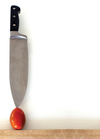Seven video editing programs for Linux
|
If you shoot a video and want to edit it in Linux, you might get confused by the sheer number of free editing programs. The web pages for these programs contain information about a multitude of features and functions. Some free programs even attract the attention of professional filmmakers.
This article compares the features and the performance of several open source video editing programs. For testing, we selected Cinelerra, Flowblade, Kdenlive, Kino, LiVES, and Shotcut, together with the proprietary but free Lightworks. Most of these programs follow the lead of Adobe Premiere Pro, a professional video editing program, in terms of how they work. Film snippets are assembled via drag and drop onto a time line and then exported as a new file.
Cinelerra
Developer Adam Williams places a lot of emphasis on the value of stable software. Therefore, he updates the video editing program Cinelerra [1] just once a year, making only a few changes each time. Williams offers an archive with a binary version for the 64-bit version of Cinelerra for Ubuntu 14.04 on his homepage. However, users of other distributions will need to compile the source code.
[...]
Buy this article as PDF
Pages: 9
(incl. VAT)




